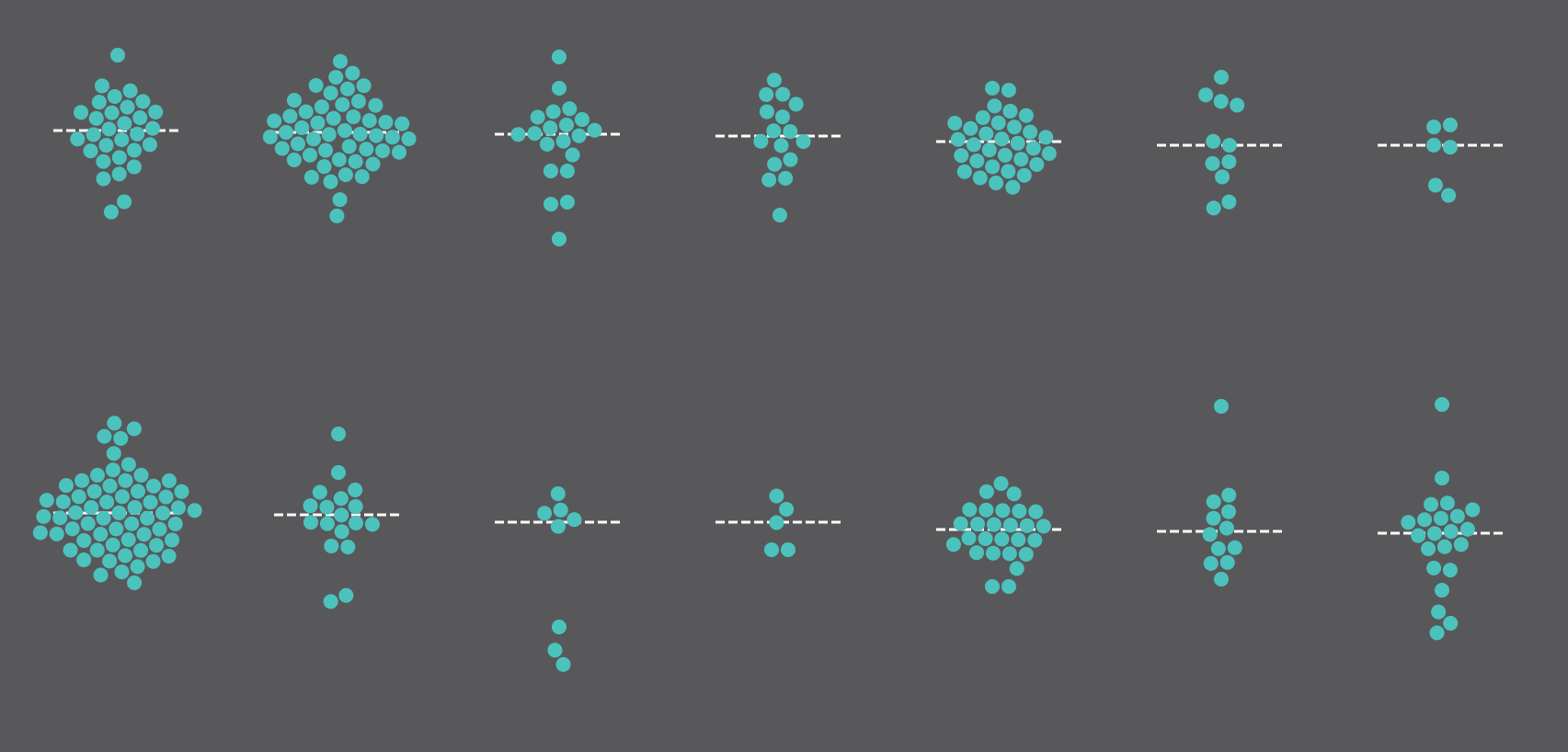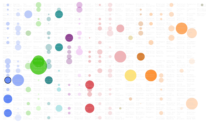
Divorce and Occupation
As people are marrying later and staying single longer, divorce continues to be common in the United States. It’s not the mythical “half of marriages end in divorce” common, but the percentages are up there.
Divorce rates vary a lot by group though. Rates are higher for the unemployed than employed. Divorce among Asians tends to be much lower than other races. Rates change a lot by education level.
So, let’s look at divorce rates by occupation. Using data from the 2015 American Community Survey, for each occupation, I calculated the percentage of people who divorced out of those who married at least once.
Each dot represents an occupation. Mouse over for details.
How fitting it is to see actuaries, assessors of risk and uncertainty, at the bottom with the lowest rate and gaming managers, in charged of games of risk and uncertainty, at the top with the highest rate.
Below is a split view for each occupation category, sorted by highest median rate to lowest. Those in transportation and material moving, such as flight attendants and bus drivers, tend to have higher divorce rates. Those in architecture and engineering tend to have lower divorce rates.
It kind of looked like salary might be related. After all, education level seems to be. So, here’s divorce rates plotted against median salary per occupation. It’s looking downward slopey.
Those with higher salary occupations tend to have lower divorce rates. That seems pretty clear. But as you know, correlation isn’t causation. If someone who is already a physician, quits and takes a job as a bartender or telemarketer, it doesn’t mean their chances of divorce changes. It probably says more about the person than anything else.
Similarly, those with certain occupations tend to be from similar demographics, which then factors into how the individuals live their lives. But still — interesting. I’m still amused that actuaries ended up with the lowest rate.
 Occupation Matchmaker
Occupation Matchmaker
So that’s who gets divorced. This is who people marry.
Notes
- The data comes from the 5-year American Community Survey from 2015. I used the IPUMS extraction tool to download the data. Here are the aggregates I calculated.
- The occupations are classified by ACS which doesn’t cover every single job in full detail. It’s generalized. Here’s the list of about 500 occupations.
- I made the charts with d3.js. Mike Bostock’s beeswarm example was especially useful as was Susie Lu’s d3-annotation.
- I analyzed and prepared the data in R.
Become a member. Support an independent site. Make great charts.
See What You GetFlowingData is made possible by supporting members. Since 2007, I, Nathan Yau, a real person, have been analyzing and visualizing data to help more people understand and appreciate it in their everyday lives.
If you liked this or want to make similar data things, please consider supporting this small corner of the internet. You get unlimited access to visualization courses, tutorials, and extra resources. Thanks. — Nathan




